-

Mar
16
Interpretive Summary: Design and characterization of a high-resolution multiple-SNP capture array by target sequencing for sheep
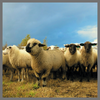
Large-scale genotyping platforms are valuable tools for animal selection and breeding programs. The bead chip has been widely used in both research and commercial applications for a long time. A highly efficient and economical genotyping platform has been developed recently.
Read more
-

Mar
16
Interpretive Summary: Signatures of selection in indigenous Chinese cattle genomes reveal adaptive genes and genetic variations to cold climate

Cold climates can affect cattle performance, survival, and health. Local cattle breeds have been adapted to the local environments including extremely cold temperatures after a long period of natural and artificial selection.
Read more
-

Mar
09
Interpretive Summary: Productive and physiological responses of feedlot cattle receiving different sources of Ca salts of fatty acids in the finishing diet
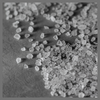
Supplemental fat has been provided to feedlot cattle to increase energy density of their diets, and may yield nutraceutical advantages if includes polyunsaturated fatty acids (FA). Alternatively, carcass quality can be improved when the fat supplement is based on saturated and monounsaturated FA.
Read more
-

Mar
09
Interpretive Summary: Evaluation of carinata meal or cottonseed meal as protein sources in silage-based diets on behavior, nutrient digestibility, and performance in backgrounding beef heifers

Increased atmospheric CO2, rising temperatures, and altered patterns of precipitation can limit the production of certain crops commonly used in agriculture, increasing risk, cost, and availability of feedstuffs. The search for alternative plants that could thrive in these changing scenarios is necessary to provide producers with a broader array of options to feed cattle.
Read more
-

Mar
09
Interpretive Summary: Changes in milk fat globule physical properties and milk fatty acid composition throughout the lactation cycle of Laoshan goat

The composition and physical properties of milk fat affect the quality and sensory properties of dairy products. However, changes in the physical properties of milk fat globules (MFGs) and profiles of milk fatty acids (FAs) of goat milk throughout the lactation period remain unclear.
Read more
-

Mar
09
Interpretive Summary: Effect of a biosynthetic bacterial 6-phytase on the digestibility of phosphorus and phytate in midlactating dairy cows
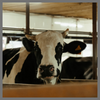
Traditionally, it has been believed that dairy cows are able to fully utilize the phosphorus (P) in feed, including that from plant-derived phytate, because of phytase activity of bacteria in the rumen. However, recent data have shown otherwise.
Read more
-

Mar
09
Interpretive Summary: Red clover supplementation modifies rumen fermentation and promotes feed efficiency in ram lambs

Red clover is rich in the bioactive isoflavone, biochanin A. The goal was to evaluate the impacts of biochanin A supplementation via red clover hay on growth performance of ram lambs as well as the rumen microbiota and fermentation.
Read more
-

Mar
09
Interpretive Summary: Identification of potential candidate genes and regulatory pathways related to reproductive capacity in hypothalamus and pituitarium of male ducks (Anas platyrhynchos) by differential transcriptome analysis

Individual reproductive capacity is crucial to poultry breeding and reproduction. The hypothalamus–pituitarium–gonad axis is an important pathway regulating animal spermatogenesis and sexual behavior. This study identified the neuroactive ligand–receptor interaction pathway as the potential biological pathway regulating the semen quality and sexual behavior by differential transcriptome analysis of the hypothalamus and pituitarium of male ducks.
Read more
-

Mar
02
Interpretive Summary: Effects of a milk oligosaccharide biosimilar on fecal characteristics, microbiota, and bile acid, calprotectin, and immunoglobulin concentrations of healthy adult dogs treated with metronidazole

Our objective was to test the effects of a novel milk oligosaccharide biosimilar (GNU100) on the fecal characteristics, microbiota, and bile acid (BA) concentrations of healthy adult dogs treated with antibiotics.
Read more
-

Mar
02
Interpretive Summary: Undergraduate student attitudes to current poultry industry issues over four semesters: surveying an introductory poultry science course
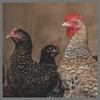
Individual experience and demographics affect perceptions of animal production. Understanding how science-based education alters these opinions is a critical aspect of improving instruction and increasing consumer engagement in the poultry industry.
Read more
-

Mar
02
Interpretive Summary: Cryoprotectant effects of natural honey on spermatozoa quality of pre-freezing and frozen-thawed boar semen

To preserve the semen of male pigs for long-term usage, especially for artificial insemination, semen samples are frozen at temperatures below zero degrees. This research study was conducted with the aim of improving the qualities of semen samples from male pigs that are usually negatively impacted by extremely low temperatures during the preservation process using liquid nitrogen.
Read more
-

Mar
02
Interpretive Summary: Apparent jejunal amino acid digestibility, gut morphology, and the expression of intestinal amino acid transporters in pigs fed protein or free amino acids
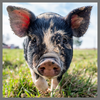
The amino acids (AA) in the diet of pigs are usually supplied as a mix of proteins and free AA. Proteins need to be digested first before their constituent AA become available to the animal. Free AA, together with small peptides, are readily available without the need for digestion.
Read more
-

Mar
02
Interpretive Summary: Serum metabolomic characterization in pigs in relation to birth weight category and neonatal nutrition
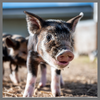
The objective of this study was to characterize developmental differences in low birth weight (LBW) and normal birth weight (NBW) piglets with or without pre-weaning nutrient restriction using serum metabolomic profile analysis. Through the serum metabolite analysis, at weaning, we saw fewer metabolites associated with fatty acid oxidation, and glycolysis in the LBW pigs compared to the NBW.
Read more
-

Mar
02
Interpretive Summary: Characterization of sow milk N-linked glycoproteome over the course of lactation
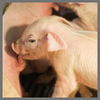
Milk is essential for healthy growth and development of neonates, with proteins in milk serving as key nutrients and regulators of these processes. Protein activity is affected by modifications made to their structure including the addition of sugar groups called glycans. Here we present the characterization of sow milk proteins modification with glycan groups on asparagine and glutamine amino acids in colostrum, transitional, and mature milk of pigs.
Read more
-

Feb
23
Battle with Mexico over GMO corn continues
.png?sfvrsn=fcb650d1_0)
The United States Department of Agriculture Under Secretary for Trade and Foreign Agricultural Affairs Alexis Taylor and Office of the United States Trade Representative Chief Agricultural Negotiator Doug McKalip, met with Mexican officials to discuss the ongoing battle over genetically modified corn.
Read more
-

Feb
23
Beef cow numbers decline
.png?sfvrsn=1cb650d1_0)
The United States Department of Agriculture’s (USDA’s) National Agricultural Statistics Service (NASS) has released the latest cattle inventory report. According to the report, cattle inventories totaled 89.27 million head, a 3% decline year over year. This is the smallest herd size for January 1st in 61 years.
Read more
-

Feb
23
Chicken industry calls for action regarding egg prices
.png?sfvrsn=3cb650d1_0)
The National Chicken Council (NCC) has called for the United States Food and Drug Administration (FDA) to take measures to decrease egg prices. The chicken industry is examining a policy that forces the broiler industry to destroy safe eggs, due to the current outbreak of highly pathogenic avian influenza (HPAI) in the United States.
Read more
-

Feb
23
EPA to study concentrated animal feeding operations
.png?sfvrsn=6eb650d1_0)
The United States Environmental Protection Agency (EPA) has released the Effluent Guidelines Program Plan 15 (Plan 15), which lays out how the Agency will work to protect the nation’s waterways by following the science and the Clean Water Act to develop technology-based pollution limits and studies on wastewater discharges from industrial sources. Part of Plan 15 includes a new study on the impact of concentrated animal feeding operations (CAFOs) on water quality.
Read more
-

Feb
23
FARM Act introduced
.png?sfvrsn=90b750d1_0)
The Foreign Adversary Risk Management (FARM) Act has recently been introduced in the House and Senate. The FARM Act will amend the Defense Production Act of 1950 to prevent harm and disruption to the United States agriculture industry by protecting against foreign influence over agriculture production and supply chains, and for other purposes.
Read more
-

Feb
23
New ARS administrator selected
.png?sfvrsn=b4b750d1_0)
The United States Department of Agriculture (USDA) has named Simon Liu, Ph.D. as the Administrator of the Agricultural Research Service (ARS). While Liu was officially named as ARS Administrator on January 4, 2023, he has been acting in this role since June 2022. In this role, Liu will lead the agency in its efforts to leverage the latest advances in science and technology and develop innovative solutions to agricultural challenges facing the nation and world.
Read more
 MarInterpretive Summary: Design and characterization of a high-resolution multiple-SNP capture array by target sequencing for sheep
MarInterpretive Summary: Design and characterization of a high-resolution multiple-SNP capture array by target sequencing for sheep Large-scale genotyping platforms are valuable tools for animal selection and breeding programs. The bead chip has been widely used in both research and commercial applications for a long time. A highly efficient and economical genotyping platform has been developed recently.
Large-scale genotyping platforms are valuable tools for animal selection and breeding programs. The bead chip has been widely used in both research and commercial applications for a long time. A highly efficient and economical genotyping platform has been developed recently. MarInterpretive Summary: Signatures of selection in indigenous Chinese cattle genomes reveal adaptive genes and genetic variations to cold climate
MarInterpretive Summary: Signatures of selection in indigenous Chinese cattle genomes reveal adaptive genes and genetic variations to cold climate Cold climates can affect cattle performance, survival, and health. Local cattle breeds have been adapted to the local environments including extremely cold temperatures after a long period of natural and artificial selection.
Cold climates can affect cattle performance, survival, and health. Local cattle breeds have been adapted to the local environments including extremely cold temperatures after a long period of natural and artificial selection. MarInterpretive Summary: Productive and physiological responses of feedlot cattle receiving different sources of Ca salts of fatty acids in the finishing diet
MarInterpretive Summary: Productive and physiological responses of feedlot cattle receiving different sources of Ca salts of fatty acids in the finishing diet Supplemental fat has been provided to feedlot cattle to increase energy density of their diets, and may yield nutraceutical advantages if includes polyunsaturated fatty acids (FA). Alternatively, carcass quality can be improved when the fat supplement is based on saturated and monounsaturated FA.
Supplemental fat has been provided to feedlot cattle to increase energy density of their diets, and may yield nutraceutical advantages if includes polyunsaturated fatty acids (FA). Alternatively, carcass quality can be improved when the fat supplement is based on saturated and monounsaturated FA. MarInterpretive Summary: Evaluation of carinata meal or cottonseed meal as protein sources in silage-based diets on behavior, nutrient digestibility, and performance in backgrounding beef heifers
MarInterpretive Summary: Evaluation of carinata meal or cottonseed meal as protein sources in silage-based diets on behavior, nutrient digestibility, and performance in backgrounding beef heifers Increased atmospheric CO2, rising temperatures, and altered patterns of precipitation can limit the production of certain crops commonly used in agriculture, increasing risk, cost, and availability of feedstuffs. The search for alternative plants that could thrive in these changing scenarios is necessary to provide producers with a broader array of options to feed cattle.
Increased atmospheric CO2, rising temperatures, and altered patterns of precipitation can limit the production of certain crops commonly used in agriculture, increasing risk, cost, and availability of feedstuffs. The search for alternative plants that could thrive in these changing scenarios is necessary to provide producers with a broader array of options to feed cattle. MarInterpretive Summary: Changes in milk fat globule physical properties and milk fatty acid composition throughout the lactation cycle of Laoshan goat
MarInterpretive Summary: Changes in milk fat globule physical properties and milk fatty acid composition throughout the lactation cycle of Laoshan goat The composition and physical properties of milk fat affect the quality and sensory properties of dairy products. However, changes in the physical properties of milk fat globules (MFGs) and profiles of milk fatty acids (FAs) of goat milk throughout the lactation period remain unclear.
The composition and physical properties of milk fat affect the quality and sensory properties of dairy products. However, changes in the physical properties of milk fat globules (MFGs) and profiles of milk fatty acids (FAs) of goat milk throughout the lactation period remain unclear. MarInterpretive Summary: Effect of a biosynthetic bacterial 6-phytase on the digestibility of phosphorus and phytate in midlactating dairy cows
MarInterpretive Summary: Effect of a biosynthetic bacterial 6-phytase on the digestibility of phosphorus and phytate in midlactating dairy cows Traditionally, it has been believed that dairy cows are able to fully utilize the phosphorus (P) in feed, including that from plant-derived phytate, because of phytase activity of bacteria in the rumen. However, recent data have shown otherwise.
Traditionally, it has been believed that dairy cows are able to fully utilize the phosphorus (P) in feed, including that from plant-derived phytate, because of phytase activity of bacteria in the rumen. However, recent data have shown otherwise. MarInterpretive Summary: Red clover supplementation modifies rumen fermentation and promotes feed efficiency in ram lambs
MarInterpretive Summary: Red clover supplementation modifies rumen fermentation and promotes feed efficiency in ram lambs Red clover is rich in the bioactive isoflavone, biochanin A. The goal was to evaluate the impacts of biochanin A supplementation via red clover hay on growth performance of ram lambs as well as the rumen microbiota and fermentation.
Red clover is rich in the bioactive isoflavone, biochanin A. The goal was to evaluate the impacts of biochanin A supplementation via red clover hay on growth performance of ram lambs as well as the rumen microbiota and fermentation. MarInterpretive Summary: Identification of potential candidate genes and regulatory pathways related to reproductive capacity in hypothalamus and pituitarium of male ducks (Anas platyrhynchos) by differential transcriptome analysis
MarInterpretive Summary: Identification of potential candidate genes and regulatory pathways related to reproductive capacity in hypothalamus and pituitarium of male ducks (Anas platyrhynchos) by differential transcriptome analysis Individual reproductive capacity is crucial to poultry breeding and reproduction. The hypothalamus–pituitarium–gonad axis is an important pathway regulating animal spermatogenesis and sexual behavior. This study identified the neuroactive ligand–receptor interaction pathway as the potential biological pathway regulating the semen quality and sexual behavior by differential transcriptome analysis of the hypothalamus and pituitarium of male ducks.
Individual reproductive capacity is crucial to poultry breeding and reproduction. The hypothalamus–pituitarium–gonad axis is an important pathway regulating animal spermatogenesis and sexual behavior. This study identified the neuroactive ligand–receptor interaction pathway as the potential biological pathway regulating the semen quality and sexual behavior by differential transcriptome analysis of the hypothalamus and pituitarium of male ducks. MarInterpretive Summary: Effects of a milk oligosaccharide biosimilar on fecal characteristics, microbiota, and bile acid, calprotectin, and immunoglobulin concentrations of healthy adult dogs treated with metronidazole
MarInterpretive Summary: Effects of a milk oligosaccharide biosimilar on fecal characteristics, microbiota, and bile acid, calprotectin, and immunoglobulin concentrations of healthy adult dogs treated with metronidazole Our objective was to test the effects of a novel milk oligosaccharide biosimilar (GNU100) on the fecal characteristics, microbiota, and bile acid (BA) concentrations of healthy adult dogs treated with antibiotics.
Our objective was to test the effects of a novel milk oligosaccharide biosimilar (GNU100) on the fecal characteristics, microbiota, and bile acid (BA) concentrations of healthy adult dogs treated with antibiotics. MarInterpretive Summary: Undergraduate student attitudes to current poultry industry issues over four semesters: surveying an introductory poultry science course
MarInterpretive Summary: Undergraduate student attitudes to current poultry industry issues over four semesters: surveying an introductory poultry science course Individual experience and demographics affect perceptions of animal production. Understanding how science-based education alters these opinions is a critical aspect of improving instruction and increasing consumer engagement in the poultry industry.
Individual experience and demographics affect perceptions of animal production. Understanding how science-based education alters these opinions is a critical aspect of improving instruction and increasing consumer engagement in the poultry industry. MarInterpretive Summary: Cryoprotectant effects of natural honey on spermatozoa quality of pre-freezing and frozen-thawed boar semen
MarInterpretive Summary: Cryoprotectant effects of natural honey on spermatozoa quality of pre-freezing and frozen-thawed boar semen To preserve the semen of male pigs for long-term usage, especially for artificial insemination, semen samples are frozen at temperatures below zero degrees. This research study was conducted with the aim of improving the qualities of semen samples from male pigs that are usually negatively impacted by extremely low temperatures during the preservation process using liquid nitrogen.
To preserve the semen of male pigs for long-term usage, especially for artificial insemination, semen samples are frozen at temperatures below zero degrees. This research study was conducted with the aim of improving the qualities of semen samples from male pigs that are usually negatively impacted by extremely low temperatures during the preservation process using liquid nitrogen. MarInterpretive Summary: Apparent jejunal amino acid digestibility, gut morphology, and the expression of intestinal amino acid transporters in pigs fed protein or free amino acids
MarInterpretive Summary: Apparent jejunal amino acid digestibility, gut morphology, and the expression of intestinal amino acid transporters in pigs fed protein or free amino acids The amino acids (AA) in the diet of pigs are usually supplied as a mix of proteins and free AA. Proteins need to be digested first before their constituent AA become available to the animal. Free AA, together with small peptides, are readily available without the need for digestion.
The amino acids (AA) in the diet of pigs are usually supplied as a mix of proteins and free AA. Proteins need to be digested first before their constituent AA become available to the animal. Free AA, together with small peptides, are readily available without the need for digestion. MarInterpretive Summary: Serum metabolomic characterization in pigs in relation to birth weight category and neonatal nutrition
MarInterpretive Summary: Serum metabolomic characterization in pigs in relation to birth weight category and neonatal nutrition The objective of this study was to characterize developmental differences in low birth weight (LBW) and normal birth weight (NBW) piglets with or without pre-weaning nutrient restriction using serum metabolomic profile analysis. Through the serum metabolite analysis, at weaning, we saw fewer metabolites associated with fatty acid oxidation, and glycolysis in the LBW pigs compared to the NBW.
The objective of this study was to characterize developmental differences in low birth weight (LBW) and normal birth weight (NBW) piglets with or without pre-weaning nutrient restriction using serum metabolomic profile analysis. Through the serum metabolite analysis, at weaning, we saw fewer metabolites associated with fatty acid oxidation, and glycolysis in the LBW pigs compared to the NBW. MarInterpretive Summary: Characterization of sow milk N-linked glycoproteome over the course of lactation
MarInterpretive Summary: Characterization of sow milk N-linked glycoproteome over the course of lactation Milk is essential for healthy growth and development of neonates, with proteins in milk serving as key nutrients and regulators of these processes. Protein activity is affected by modifications made to their structure including the addition of sugar groups called glycans. Here we present the characterization of sow milk proteins modification with glycan groups on asparagine and glutamine amino acids in colostrum, transitional, and mature milk of pigs.
Milk is essential for healthy growth and development of neonates, with proteins in milk serving as key nutrients and regulators of these processes. Protein activity is affected by modifications made to their structure including the addition of sugar groups called glycans. Here we present the characterization of sow milk proteins modification with glycan groups on asparagine and glutamine amino acids in colostrum, transitional, and mature milk of pigs. FebBattle with Mexico over GMO corn continues
FebBattle with Mexico over GMO corn continues.png?sfvrsn=fcb650d1_0) The United States Department of Agriculture Under Secretary for Trade and Foreign Agricultural Affairs Alexis Taylor and Office of the United States Trade Representative Chief Agricultural Negotiator Doug McKalip, met with Mexican officials to discuss the ongoing battle over genetically modified corn.
The United States Department of Agriculture Under Secretary for Trade and Foreign Agricultural Affairs Alexis Taylor and Office of the United States Trade Representative Chief Agricultural Negotiator Doug McKalip, met with Mexican officials to discuss the ongoing battle over genetically modified corn. FebBeef cow numbers decline
FebBeef cow numbers decline.png?sfvrsn=1cb650d1_0) The United States Department of Agriculture’s (USDA’s) National Agricultural Statistics Service (NASS) has released the latest cattle inventory report. According to the report, cattle inventories totaled 89.27 million head, a 3% decline year over year. This is the smallest herd size for January 1st in 61 years.
The United States Department of Agriculture’s (USDA’s) National Agricultural Statistics Service (NASS) has released the latest cattle inventory report. According to the report, cattle inventories totaled 89.27 million head, a 3% decline year over year. This is the smallest herd size for January 1st in 61 years. FebChicken industry calls for action regarding egg prices
FebChicken industry calls for action regarding egg prices.png?sfvrsn=3cb650d1_0) The National Chicken Council (NCC) has called for the United States Food and Drug Administration (FDA) to take measures to decrease egg prices. The chicken industry is examining a policy that forces the broiler industry to destroy safe eggs, due to the current outbreak of highly pathogenic avian influenza (HPAI) in the United States.
The National Chicken Council (NCC) has called for the United States Food and Drug Administration (FDA) to take measures to decrease egg prices. The chicken industry is examining a policy that forces the broiler industry to destroy safe eggs, due to the current outbreak of highly pathogenic avian influenza (HPAI) in the United States. FebEPA to study concentrated animal feeding operations
FebEPA to study concentrated animal feeding operations.png?sfvrsn=6eb650d1_0) The United States Environmental Protection Agency (EPA) has released the Effluent Guidelines Program Plan 15 (Plan 15), which lays out how the Agency will work to protect the nation’s waterways by following the science and the Clean Water Act to develop technology-based pollution limits and studies on wastewater discharges from industrial sources. Part of Plan 15 includes a new study on the impact of concentrated animal feeding operations (CAFOs) on water quality.
The United States Environmental Protection Agency (EPA) has released the Effluent Guidelines Program Plan 15 (Plan 15), which lays out how the Agency will work to protect the nation’s waterways by following the science and the Clean Water Act to develop technology-based pollution limits and studies on wastewater discharges from industrial sources. Part of Plan 15 includes a new study on the impact of concentrated animal feeding operations (CAFOs) on water quality. FebFARM Act introduced
FebFARM Act introduced.png?sfvrsn=90b750d1_0) The Foreign Adversary Risk Management (FARM) Act has recently been introduced in the House and Senate. The FARM Act will amend the Defense Production Act of 1950 to prevent harm and disruption to the United States agriculture industry by protecting against foreign influence over agriculture production and supply chains, and for other purposes.
The Foreign Adversary Risk Management (FARM) Act has recently been introduced in the House and Senate. The FARM Act will amend the Defense Production Act of 1950 to prevent harm and disruption to the United States agriculture industry by protecting against foreign influence over agriculture production and supply chains, and for other purposes. FebNew ARS administrator selected
FebNew ARS administrator selected.png?sfvrsn=b4b750d1_0) The United States Department of Agriculture (USDA) has named Simon Liu, Ph.D. as the Administrator of the Agricultural Research Service (ARS). While Liu was officially named as ARS Administrator on January 4, 2023, he has been acting in this role since June 2022. In this role, Liu will lead the agency in its efforts to leverage the latest advances in science and technology and develop innovative solutions to agricultural challenges facing the nation and world.
The United States Department of Agriculture (USDA) has named Simon Liu, Ph.D. as the Administrator of the Agricultural Research Service (ARS). While Liu was officially named as ARS Administrator on January 4, 2023, he has been acting in this role since June 2022. In this role, Liu will lead the agency in its efforts to leverage the latest advances in science and technology and develop innovative solutions to agricultural challenges facing the nation and world.



